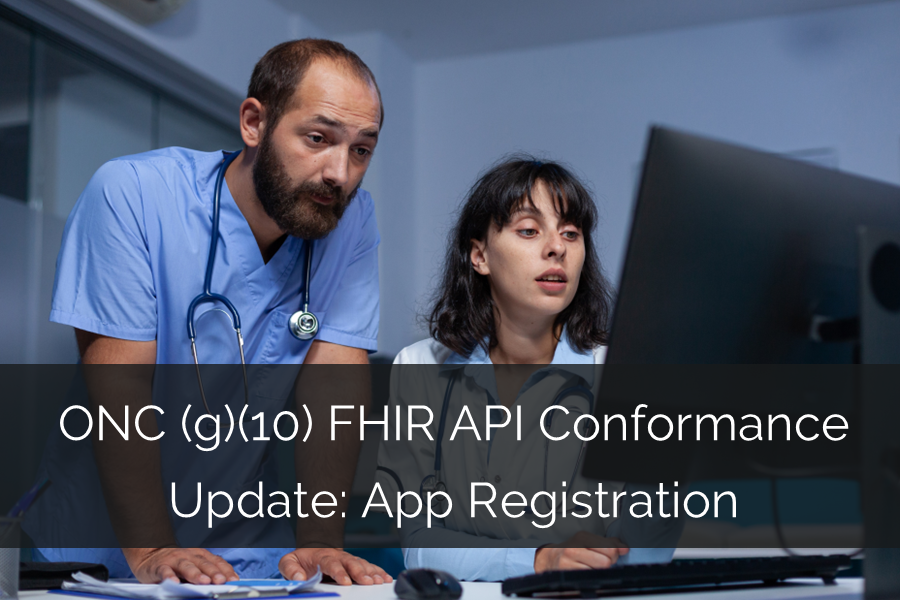Cures Act MYTHBUSTERS
Since we addressed some of the Cures Act burning questions in a previous blog, some new ones have surfaced. A majority of these are around the (g)(10) FHIR-based API requirement with the December 31, 2022, deadline. Sadly, the misinformation floating around combined with an incomplete understanding of the Cures Act requirements can be detrimental to the EHR developers and providers. In this blog, our intent is to bust these myths, shatter misconceptions, and guide you to ask the right questions.
Myth 1: Deadlines for the (g)(10) FHIR-based API might be Extended Again
Many are hoping that ONC might extend the deadline past December 31, 2022, for the g-10 FHIR-based API requirement. After attending multiple Webinars and Health IT Roundtables, we can confidently say that this is not likely. The extension to December 31, 2022, is the last extension the authorities plan on providing. The ONC and HHS are prepared to enforce the two-pronged enforcement provisions for the 21st Century Cures Act. ONC will cover EHRs with the mandated certification updates, while HHS handles the Information Blocking claims brought against potential Actors (EHRs and Providers).
“While the HHS OIG prepares to enforce the penalty phase of the rule, ONC is prepared to wield the power of EHR decertification.”
In 2011 ONC initiated Meaningful Use, designed to achieve interoperability by sharing the information voluntarily. After 11 years and $34.7 Billion in paid incentives, ONC and HHS are prepared to apply penalties to enforce the interoperability between providers and patients’ access to their health information as the ONC Chief, Micky Tripathi indicated in a recent Healthleaders interview. These penalties for non-compliance have been defined as decertification for EHRs and monetary penalties for Information Blocking for both EHRs and Providers.
Myth 2: One and Done Approach Still Works for 2015 Edition Cures Act Certification
With no extension in sight, EHRs should continue to focus on having a fully functional FHIR-based API by the end of this year (about 115 working days from now). Fully functional means addressing both the 170.315 (g)(10) criteria for certification and the ability to get the FHIR-API into production to satisfy the Information Blocking provision. Merely having a checkmark on your CHPL site is only a tiny portion of the requirements, so be careful of simple stand-alone solutions that offer just a “check the box” approach to satisfying (g)(10). You are no longer “One and Done” with your ONC ATB. You will need to continue demonstrating full compliance with Real-World Testing, version updates every year, and submitting bi-annual Attestations as a Condition and Maintenance of Certification. Failure to submit any attestations or the RWT plan by the deadline each year could result in the decertification of your EHR.
Myth 3: Developer Portal is Optional
Although the Developer Portal portion of the API isn’t tested as a part of (g)(7-10) certification testing, EHRs are required to maintain a Developer Portal to be able to approve Third-Party Apps that desire to connect through an EHR’s API. These are grouped under the Compliance Responsibilities and Ongoing Practices required for API certification and maintenance. It is a liability that the EHRs need to assume. Another approach to satisfy this requirement would be integrating with a Cures Act Certified Solution like BlueButtonPRO that already meets all these requirements.
Myth 4: USCDI V1 is All You Need for Cures Act Compliance
While the USCDI V1 data elements are yet to reach their December 31, 2022 implementation date, ONC has already announced that EHR developers can add the data elements of the USCDI V2 beginning August 29, 2022, to their EHR. As we begin implementing USCDI V1 and V2, ONC is already working on the USCDI V3. Additionally, by October 6, 2022, the API that a Certified EHR uses must be able to handle requests by a patient not just for the USCDI V1 PHI but for all data as a part of EHI (all Electronic Health Information available in the EHR). A “check-the-box” solution could leave you wanting a lot more along with leaving you exposed to the risk of being an Information Blocker.
“USCDI standardization will also accelerate consumers’ ability to download their records into personal health apps they control.”
”Providers should “think strategically” about changing their EHR culture to one of authorized information sharing.”
The good news is that it is possible to delegate the responsibility of staying on top of FHIR-API requirements, the USCDI versions and meet all Conditions of Maintenance and Certifications to a certified solution.
Though we’ve tried to address the most prominent myths, there still might be some misinformation that you come across. You could be misled by the lower cost of “check-the-box” solutions that leave a significant workload and liability for the EHRs as opposed to a certified third-party App like BlueButtonPRO. Make sure you do an accurate Cost-in-Use analysis to find a solution that provides you with the functionality you’ll need to meet the Cures Act requirements and covers you for the future.
Still unsure of all the elements you need to fully satisfy the (g)(10) FHIR-API requirements?
Set up an appointment to discuss how we can help












